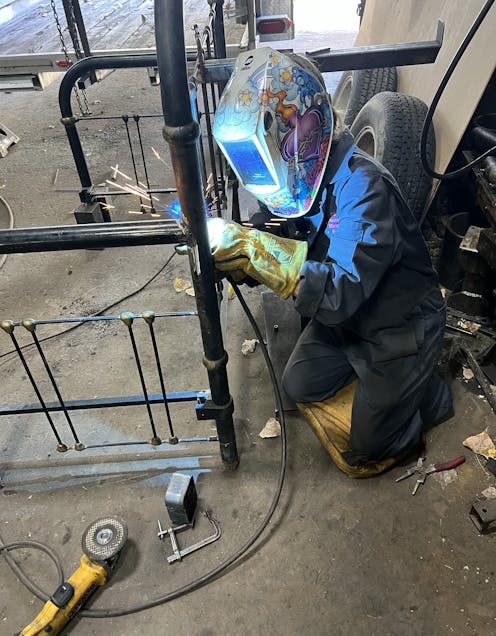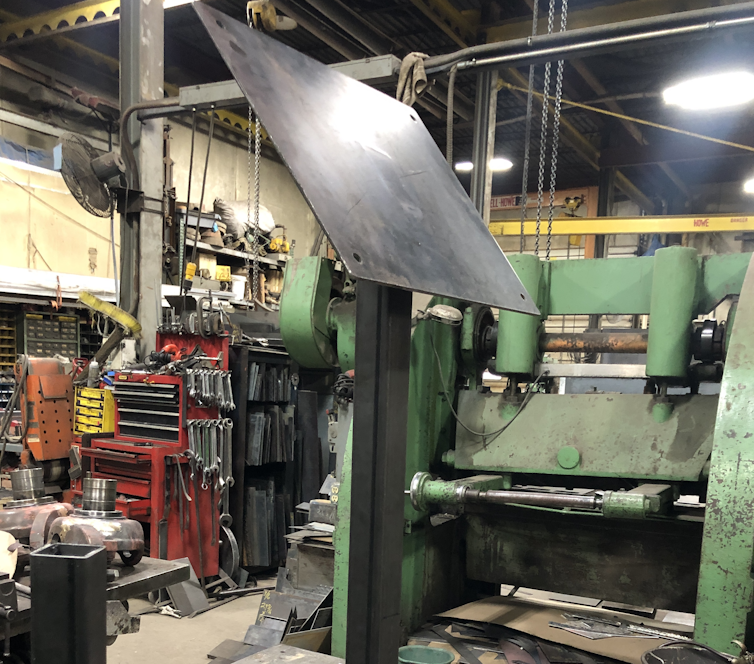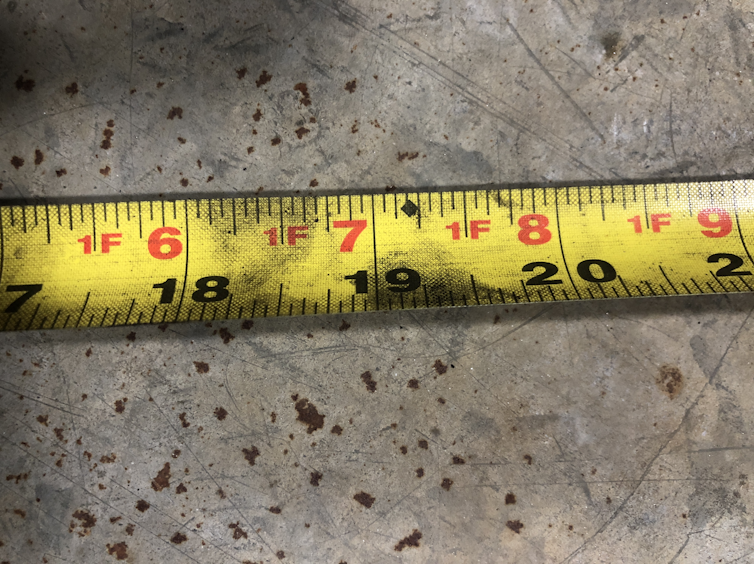Only 5.3% of welders in the US are women. After years as a writing professor, I became one − here’s
Being a woman in a welding and fabrication shop means finding workarounds for getting tasks done.

Although I have a good gig as a full professor at Iowa State University, I’ve daydreamed about learning a trade – something that required both my mind and my hands.
So in 2018, I started night courses in welding at Des Moines Area Community College. For three years, I studied different types of welding and during the day worked on a book about the communication between welding teachers and students. I wasn’t the only woman who became interested in trades work during this time. Recognizing the good pay and job security, U.S. women have moved in greater numbers into skilled trades such as welding and fabrication within the past 10 years. g From 2017 to 2022, the number of women in trades rose from about 241,000 to nearly 354,000. That’s an increase of about 47%. Even so, women still constitute just 5.3% of welders in the United States.
When I received my diploma in welding in May 2022, I’d already found the place I wanted to work: Howe’s Welding and Metal Fabrication. I’d met the owner, Jim Howe, when I visited his three-man shop in Ames, Iowa, in January 2022 for research on a second book about communication in skilled trades.
Howe’s shop focuses on repairs and one-off fabrication, not large-scale production of single items. Under Howe’s tutelage, I’ve fabricated skis for the machines that make the rumble strips in the road, shepherd’s hooks for bird feeders, fence poles and stainless-steel lampshade frames. I’ve repaired trailers, wheelchair ramps, office chairs and lawn mowers.
Both my experience at Howe’s and my research at nine other fabrication facilities in Iowa have shown me that – at least for the time being – tradeswomen must find workarounds for commonly encountered challenges. Some of these challenges are physical. These could include being unable to easily reach or move necessary material and tools. Or they could be emotional, such as encountering sexism. As I explore in my forthcoming book, “Learning Skilled Trades in the Workplace,” this is true even in a welcoming environment like Howe’s shop, where I work with a supportive and helpful boss and co-workers.
Questions of competence
Being a tradeswoman means being scrutinized for competence. One of the tradeswomen I interviewed for the book told me this story about being tested by more experienced tradesmen:
“I remember them tacking together a couple of pieces of metal for me and saying, ‘Okay, I want you to weld a six millimeter weld here and an eight millimeter weld here,’ and I was so nervous because these are the guys that I’m going to work with, and I just was so nervous and I laid down the welds and put my hood up and the guy goes, ‘Well, goddamn, bitch can weld,’ and I was like, ‘Oh my god, thank god.’”
I’ve felt this same scrutiny from Howe’s customers. Once, two customers watched me as I used the ironworker to punch ovals in rectangular tubing. I had to step on the pedal to lower the punch, find the indentation of the spot to punch, hold a combination square against the metal to ensure the oblong shape was parallel to the tubing’s edge, step on the pedal and pull the stripper toward me.
I could feel my legs turn to jelly as I performed the steps and – as I perceived it – represented the trade competence of all womankind. I’m resentful of these silent evaluations, particularly when I’m learning something new and trying to keep all my fingers.
Overcoming the environment
The standards established by the Occupational Safety and Health Administration, or OSHA, don’t necessarily account for all the physicality of trades work. On the day Jim told me to bend 20 pieces of ½-inch round stock, I had to use all my weight to pull the Hossfeld bender’s arm to make the S shapes.
The 20 S hooks would hang on a bar and hold the 18 come-alongs that Jim had accumulated. Tired after I’d finished all the bending, I sighed as Jim told me to hang all the come-alongs on a mobile rack he had bought at auction for just this purpose.
I had to squat to pick each one up and use my legs and then arms to lift each to a newly made hook. But I didn’t complain. Stoicism is a workaround to credibility.
Navigating sexist comments
My interactions with Howe’s customers have been peppered with low-grade sexism. Trying to determine the reason for my presence, one customer asked me, “Are you the new secretary?”
Another man commented on my appearance, comparing me to my co-worker: “You’re better looking than the guy I talked to before.” Such harassment remains common for tradeswomen and ranges from mild, to violent, to just plain creepy, as when one man, paying his bill at the front desk, whispered, “Your hands are dirty.”
Women in trades have reported encounters with customers who doubted their competence and who refused to deal with them, seeking a man instead.

Some customers at Howe’s fit this pattern. I’ve noticed that if I’m at the front desk with a male co-worker, men will often look past me and address them, even though I’m older and, as far as they know, more experienced. Other customers like to tell me how to do my job.
One man, watching me while I cut 8-foot lengths of tubing for him, told me that I could simply hook my tape measure over the saw blade and subtract ⅛-inch to find the correct length. Piqued after I explained why his method wouldn’t work for a precise measurement, he responded by quizzing me on something I wasn’t likely to know: the purpose of the black diamonds on my tape measure.
The man in the audience at the academic conference who wants to lecture rather than ask a question of the woman who is the speaker has become a trope. The pontificating metal-shop customer should be, too. Like other tradeswomen, I’ve learned to work around unwanted comments, including uninvited conversations with men bent on signaling their expertise.

Toward greater expertise
My soon-to-be-published book doesn’t focus solely or even mostly on my experiences as a woman in a welding and fabrication shop. Rather, it looks at the nonlinear process of learning skilled trades – a process that is, for tradeswomen, sometimes frustrated by scrutiny, physical challenges and sexism, which require workarounds.
Nevertheless, along this journey, I’ve leaned on the strength of the tradeswomen before me. Although these women have been “alone in a crowd,” they’ve consistently worked around challenges toward broader and deeper expertise.
I work for Howe's Welding and Metal Fabrication part-time, as I discuss in my article.
Read These Next
Sleep problems and depression can be a vicious cycle, especially during pregnancy − here’s why it’s
Inadequate sleep can have negative downstream effects on everyday cognitive functioning and mental health,…
How a niche Catholic approach to infertility treatment became a new talking point for MAHA conservat
Mainstream medical organizations have criticized ‘restorative reproductive medicine,’ but some Catholics…
Sharks and rays get a major win with new international trade limits for 70+ species
Sharks have had a tough time since the 1970s, when overfishing, habitat loss and a growing trade in…






